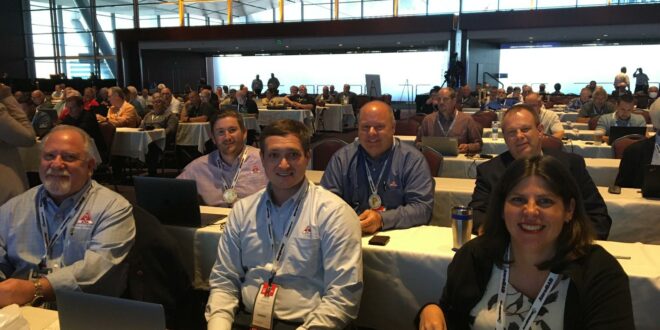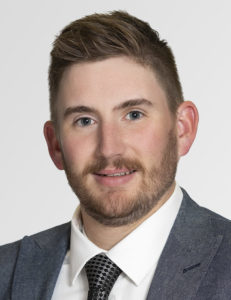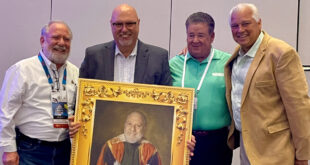
Higher Standards
With the NFPA Conference and Expo behind us, AFSA is now focused on a very active F2022, A2023, F2023, and A2024 revision cycle[1]. For the F2022 and A2023 revision cycles, the following standards are being revised: NFPA 1, NFPA 3, NFPA 4, NFPA 14, NFPA 22, NFPA 30, NFPA 45, NFPA 96, NFPA 101®, NFPA 914, NFPA 915, and NFPA 5000®.
For the F2023 and A2024 revision cycles, the following standards are being revised: NFPA 11, NFPA 13, NFPA 13R, NFPA 13D, NFPA 20, NFPA 24, NFPA 33, NFPA 34, NFPA 37, NFPA 72®, NFPA 75, NFPA 76, NFPA 170, and NFPA 291.
While this is an extensive list to keep track of, with first and second draft meetings seemingly occurring daily for AFSA’s Engineering and Technical Services Department, the effort and preparation involved are necessary to keep a pulse on the technical issues within the sprinkler industry and keep our members well informed. Of all the standards currently in cycle, the revisions to NFPA 13 are the primary focus.
The first draft meeting for NFPA 13 occurred in July in Indianapolis, Indiana, and there was a substantial amount of work completed during six days of in-person meetings. There were multiple new concepts introduced into the standard, and everyone would benefit from reading the first draft report by going to nfpa.org/13next. The highlights of the first draft revisions will follow, and AFSA would encourage all members to voice their opinions by either contacting AFSA’s Technical Services staff or submitting their own public comment. If submitting a public comment seems daunting, we can help you with that too – or if you are in Las Vegas for AFSA41, check out the seminar with NFPA’s Matt Klaus and me as we discuss the logistics revolving around locating, understanding, and reviewing the first draft report, as well as submitting public comments.
Qualified Personnel
There was a coordinated effort over the last year to correlate the definition and application of the requirements for “qualified personnel.” While NFPA 20 has historically had a qualified personnel requirement due to the complexity of those systems, the other water-based installation standards and inspection, testing, and maintenance standard only provided a definition of “qualified.”
There will now be a set of requirements in NFPA 13 detailing acceptable qualification options:
4.3 Qualified Personnel.
4.3.1 Qualified personnel shall meet at least one of the following qualifications:
- Meets the requirements and training for a given field acceptable to the AHJ
- Is certified by an approved fire protection certification organization
- Is registered, licensed, or certified by a state or local authority to perform design or installation of sprinkler systems
Our membership should be in support of having qualified personnel design and install sprinkler systems, and in no way should this be considered an attack on merit shop labor, but AFSA is aware of the current political climate, and we are keeping a watchful eye on this topic to ensure that is does not develop into something that is unpalatable to our members.
Supplemental Sprinklers
What are supplemental sprinklers? How can this new concept benefit our contractor members? Based on the new proposed definition, supplemental sprinklers are additional sprinklers that are installed below wide obstructions. This is a simplistic definition, but it is necessary to apply new options for the types of sprinklers that are permitted to be installed below wide obstructions. The current language that is proposed would permit quick-response standard spray sprinklers to be installed below wide obstructions in ESFR or CMSA storage designs and only require a four-sprinkler calculation to verify the pipe sizes feeding the lower-level sprinklers. This could significantly reduce cost; however, the application of the design requirements is unclear and in need of public comment.
System Protection Area Limitation
For years, the total floor area of sprinkler systems has been limited to 52,000 sq. ft for light and ordinary hazard occupancies and 40,000 sq. ft for extra hazard and storage occupancies. The rationale behind these values simply took the 400 sprinklers times the 130 sq. ft per sprinkler permitted by the pipe schedule method to get 52,000 sq. ft for light and ordinary hazard occupancies and 400 sprinklers times 100 sq. ft to get 40,000 sq. ft for extra hazard and storage occupancies. Should you have to split a 52,500 sq. ft office space into two systems? No! If the system is calculated hydraulically, the extra square footage is inconsequential. The committee discussed this and proposed the concept of treating the minimum areas as nominal areas. There is a committee input that will be published in the first draft report with the following language:
4.4.1 Minimum Number of Systems.
4.4.1.1* The minimum number of systems shall be determined by dividing the total floor area by the nominal floor area determined by 4.4.1.2 using normal rounding conventions.
A.4.4.1.1 As an example, a 230,000 ft2 light hazard occupancy would require a minimum of 4 systems which could permit the system area to be increased to 57,500 ft2.
Existing System Chapter
The existing system chapter was introduced in the 2019 edition of NFPA 13, but with requirements for existing system modifications littered throughout the standard, it was not as effective as it could be. This cycle a task group was formed to relocate all of the requirements in the standard that had to do with existing systems to the existing systems chapter. While the technical changes are minimal, all users of the document are encouraged to read the proposed chapter in its entirety and provide comment on any gaps or additions that would make the section better.
Conclusion
It should be noted that the time this article was written, the proposed changes noted were not balloted by the technical committee. The proposed actions do not officially enter the first draft report until they are secured by a two-thirds vote via letter ballot. Should you have any comments, questions, or concerns about any of the proposed changes, do not hesitate to reach out to AFSA’s Engineering and Technical Services Department to discuss your issues.
[1] A2023 and A2024 refer to the annual revision cycle for standard development. The year specified is the year of the NFPA Conference and Expo® that the document will be discussed if any NITMAMs are submitted and certified. F2022 and F2023 refer to the fall revision cycle. NFPA previously held two technical meeting per year, but the fall revision cycles are now discussed the following year at the next NFPA Conference and Expo®.
 ABOUT THE AUTHOR: Kevin Hall, M.Eng., P.E., ET, CWBSP, PMSFPE, is Senior Manager for AFSA’s Engineering and Technical Services Department.
ABOUT THE AUTHOR: Kevin Hall, M.Eng., P.E., ET, CWBSP, PMSFPE, is Senior Manager for AFSA’s Engineering and Technical Services Department.

 Sprinkler Age A Publication of the American Fire Sprinkler Association
Sprinkler Age A Publication of the American Fire Sprinkler Association
